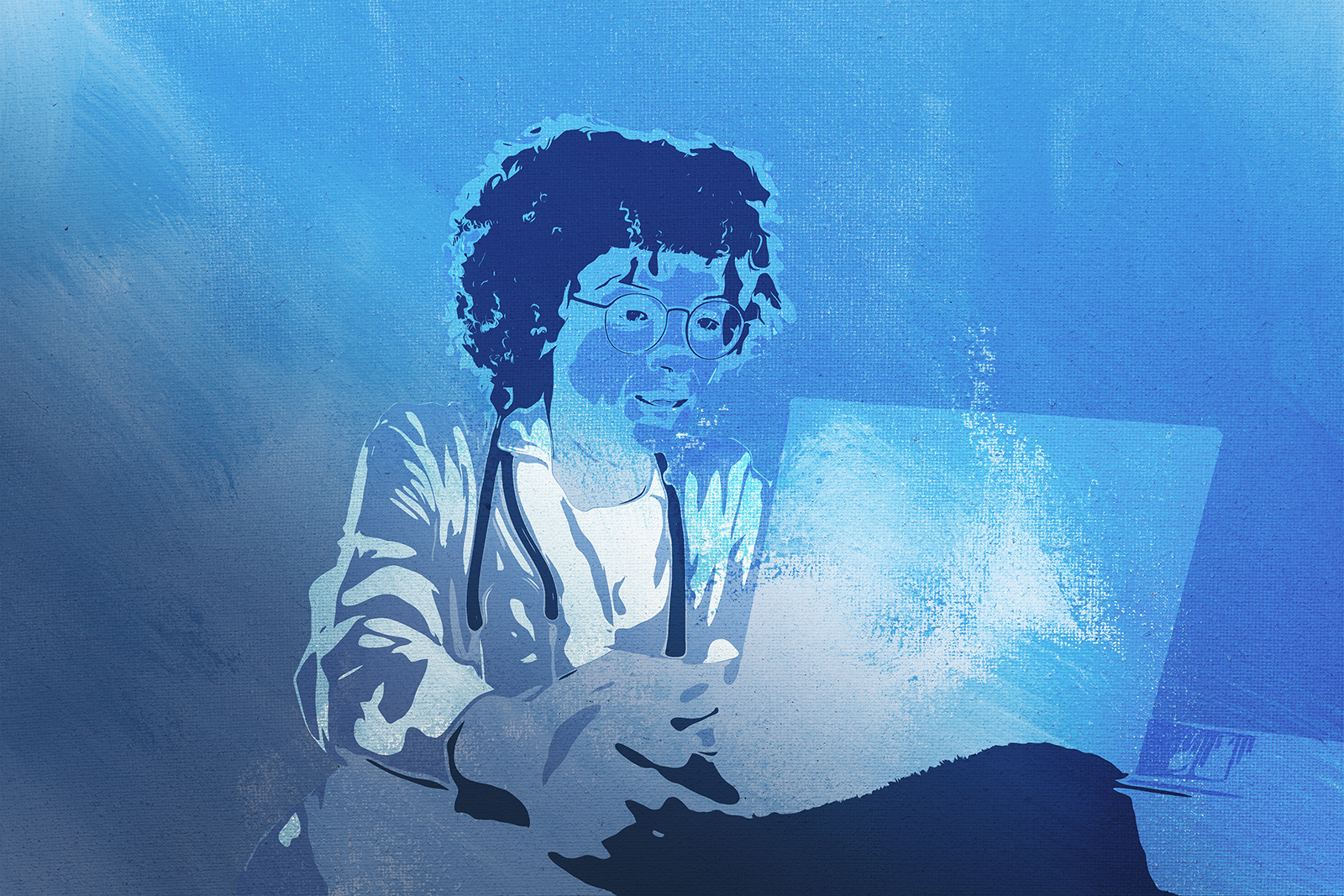Pushing learning boundaries: Novel adaptations in medical education

In 2020, NOSM faced an incredible challenge when the pandemic reached Northern Ontario. It was a time of swift transformation and lasting changes, charting the renewal of medical education.
“The biggest transformation was the comfort and confidence gained by making and delivering changes quickly,” says Dr. Lee Toner, Interim Associate Dean of Undergraduate Medical Education and Associate Professor at NOSM.
“We had to make adjustments to our curriculum. Since NOSM has a successful distributed learning model, we were very well positioned to expand our virtual education which made the transition much smoother,” says Dr. Toner.
Modules in the curriculum were moved around quickly, which Dr. Toner says would’ve taken years to implement prior to the pandemic, and faculty were quick to step up and help. As a result, student feedback was positive and they really appreciated the effort put forward in creating virtual graduation ceremonies to celebrate their milestone despite the pandemic. Limitations in physical presence and in large groups accelerated the development of asynchronous distance education and student assessment. As well the prolonged pandemic has had a serious impact on medical student well-being and academic career choices.
Some changes are here to stay. “In some cases, faculty have decided that the virtual format is the best way to deliver their curriculum. With interprofessional teams across Northern Ontario, working together virtually is a better delivery model,” says Dr. Toner.
Dr. Peter Istvan is NOSM’s Director of Phase 2, where students spend their third year in a mid-sized community. He says the School was well prepared for the virtual transition. “Two major transformations were remote delivery and monitoring of the Quarterly Progressive Assessments, and Virtual third-year orientation and OSCEs.” It was the first time that The Objective Structured Clinical Examination (OSCEs) were delivered virtually. “We’d never even thought of doing virtual exams but now we can and are considering it, and as a formative experience, it’s particularly helpful for anyone who has accessibility issues,” adds Dr. Toner.
Dr. Istvan says NOSM’s ability to deliver its third-year curriculum in community during 2021-2022 is a huge success thanks to the tireless effort of the Site Administrative Coordinators, Site Liaison Clinicians, and community partners in each of the Comprehensive Community Clerkship sites. Also, the herculean work of NOSM’s IT staff in quickly dealing with early challenges with audio, video, downloading and streaming errors, login problems ad intermittent internet availability in many northern sites as well as resolving security issues made this transformation possible.
The new advocacy curriculum added to the fourth-year program is an example of an impactful and swift, faculty-led adaptation—one that empowered students to pursue their passions. Dr. Toner says that students were able to pivot very quickly on big initiatives and deliver some really impressive projects to address the immediate health-care system and community needs. “That is critically important because that’s what physicians do—we become patient and health system advocates.”
NOSM’s virtual accreditation—the first of its kind at a medical school in Canada—was another transformation. Rather than one central site with satellite sites joining in from across the region, for the first time with the new virtual format everyone was on equal footing and able to be heard.
Upcoming changes include the gradual return to small group learning and clinical experiences. “It was tough for the first-year students and the second-year students in particular who missed out on in-person experiences. They provided feedback and that’s why we’re really striving to get as much in-person experience back to them as possible,” says Dr. Toner.
The possibilities are leading to new ideas around delivering more of the curriculum in smaller communities and minimizing displacement for students. Family connections and commitments are considerations that factor into the decision of whether or not they apply to medical school.
“Examining possibilities with the small incremental changes that we experienced during COVID-19—and we continue to experience—are useful ways to renew the curriculum even further,” says Dr. Toner.
Though a source of disruption, COVID-19 may be a catalyst for the transformation of medical education that had been brewing for the past decade including the appropriate emphasis on electives. Electives will no longer be like auditions for residency, but about acquisition of necessary skills for pursuing a residency program in any area. By moving the CaRMS process to virtual interviews, we will also lower the carbon foot print of students in the matching process.
